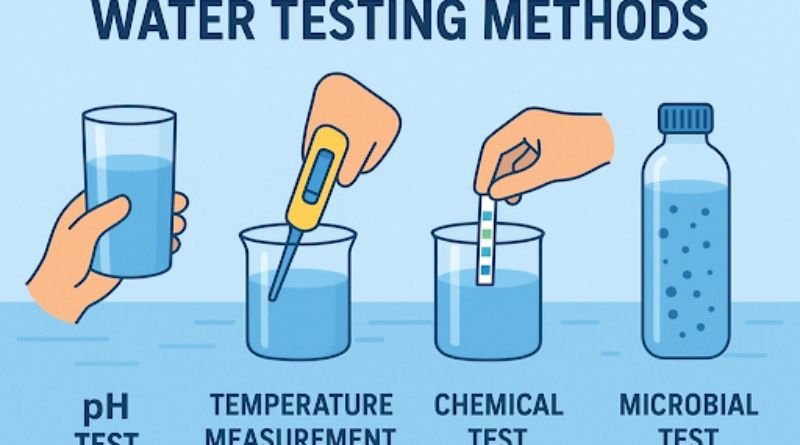Knowing what’s in your tap water is a big part of keeping your home – and your loved ones – safe and healthy. Sure, water may look as pure as a mountain stream when it comes out of the faucet. But looks can be deceiving (just ask my mysterious leftovers at the back of the fridge). That crystal-clear pour can still hide invisible troublemakers that aren’t on the guest list. The good news? There are straightforward ways to find out exactly what’s swimming around in your water glass.
In this guide, we’ll splash through the most common water testing methods and help you pick the one that suits your home best. Whether you’re a hands-on DIYer or more of a “let the experts handle it” type, you’ll get the details you need, from quick kits to full-on lab reports. So, roll up your sleeves (or just your pant legs if you’re feeling dramatic), and let’s dive in.
DIY Water Testing Kits
If the word “DIY” fills you with excitement and a hint of dread, you’re not alone. Luckily, do-it-yourself water testing kits are both handy and pretty foolproof (we’re looking at you, last year’s failed sourdough starter). You can snag these kits online or at your favorite hardware store, often right next to the paint samples you never use.
How They Work
At-home water testing methods are as simple as making instant coffee. Just collect a little tap water, dunk a test strip, or add your liquid gold to a tiny vial with a special potion (okay, it’s a reactive agent, but potion sounds more fun). After a bit of a wait – long enough to ponder life’s big questions – you match the color to a chart included in the kit. Voilà! You have a rough idea of what’s lurking in your pipes.
Pros and Cons
DIY kits win big on convenience and price – no appointment (or lab coat) required. You get instant feedback; no need to twiddle your thumbs for days. But don’t expect the full scoop: these kits usually only test for the common culprits. For a more Sherlock-Holmes-level investigation, you may need to call in the pros.
Laboratory Water Testing
Ready to take water sleuthing up a notch? If odd smells, strange tastes, or suspicious pipes have you raising an eyebrow, send your water sample to a certified lab. This is the method of choice for those who trust science over educated guessing and want answers about contaminants that could use a little less mystery in their lives.
The Process
Here’s how it goes: order a collection kit from a reputable lab (think sterile bottles and instructions that even teenagers might read). Fill ‘er up, seal it carefully, and pop those samples in the mail. In a few days, a team of lab techs – armed with gadgets worthy of a spy movie – will give your water the complete workup.
Accuracy and When to Choose It
Lab testing is the grand finale of water analysis: precise, reliable, and thorough. It roots out sneaky contaminants like heavy metals, pesticides, and bacteria that would never show up on a DIY kit’s radar. Granted, it’ll cost more and take a little longer, but the peace of mind (and the impressively detailed report) can be worth every penny.
Common Water Contaminants and Risks
You may be wondering – what exactly are you trying to find? Well, lead can invade your pipes like an uninvited houseguest. Bacteria like E. coli don’t just crash your water – they leave a mess. Add pesticides and industrial chemicals to the mix, and suddenly plain old water becomes a bit of a wild ride. That’s why testing regularly is your home’s best defense – think of it as a security check for your plumbing.
Ensure Your Water is Safe
Testing your water isn’t just for the hyper-vigilant or people with a chemistry kit stashed in the basement – it’s smart for any homeowner. Whether you go with a trusty DIY kit or invest in professional lab testing, understanding what you’re drinking lets you take charge.
Catch issues early, and toast to another day of clear, safe water. Stay proactive, pour yourself a glass, and rest easy knowing your water’s got nothing to hide (well, except maybe a few lingering bubbles).
